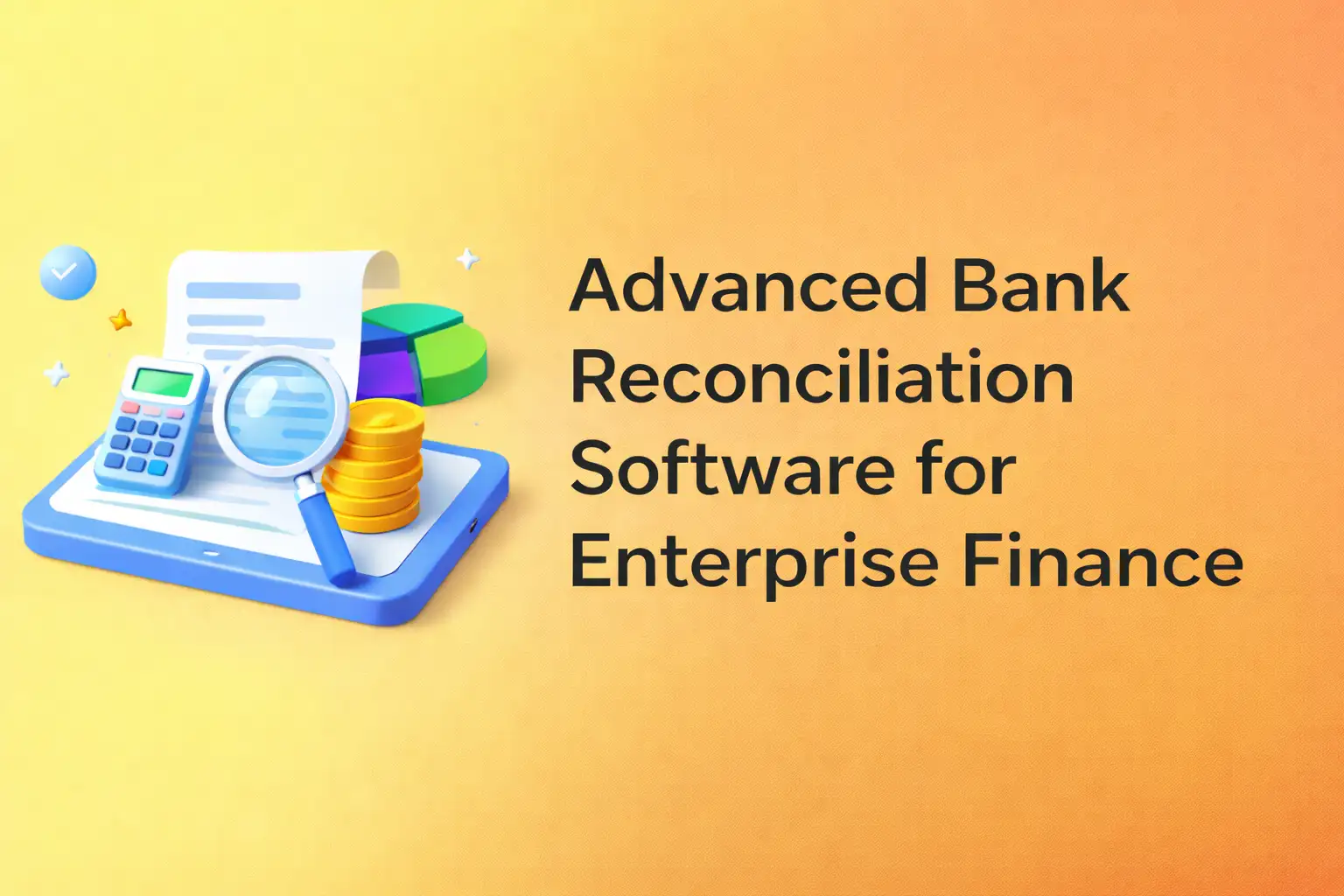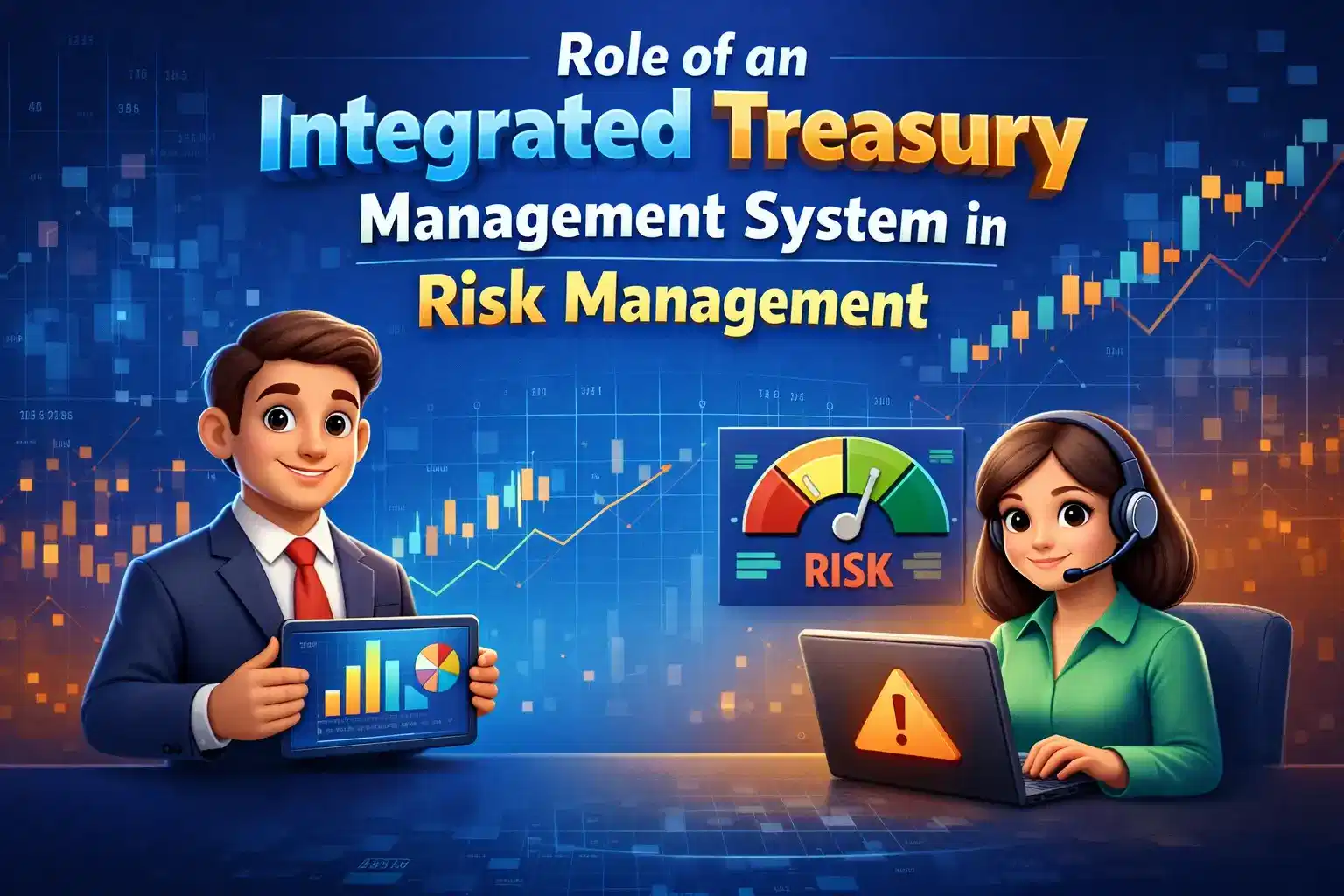Why Real-time Financial Reporting is Essential for Decision Making?
Did you know 82% of financial teams use manual tools to track finances? This is despite the growing need for real-time data. Real-time financial reporting is key for businesses to stay ahead. It gives them accurate, up-to-date financial data for quicker, smarter decisions.
Companies must use real-time financial reporting to make better choices. Manual tools like Excel can cause mistakes and slow things down. Moving to automated solutions helps businesses analyze data better. This leads to growth and better financial health.

Real-time financial reporting boosts financial clarity and cuts down on errors. It also builds trust with stakeholders. Regular financial updates are vital for planning. They help companies make smart financial decisions and boost their performance.
Key Takeaways
- Real-time financial reporting is key for making smart decisions and improving financial stats.
- Automated solutions improve accuracy and cut down on errors in financial data analysis.
- Regular financial updates boost transparency and trust with stakeholders.
- Real-time reporting helps businesses react fast to market changes and make timely investment choices.
- Companies using real-time reporting tend to see better revenue growth and financial health.
Understanding Real-time Financial Reporting in Modern Business
Real-time financial reporting is key in today's business world. It helps companies make quick, informed decisions with up-to-date financial info. This way, they can quickly adapt to market changes, improving their decision-making.
Real-time financial reporting combines financial data from different sources. It uses automated reports and real-time analytics. This lets businesses track important performance indicators and make decisions based on data. Some benefits include:
- Improved decision-making accuracy
- Enhanced operational efficiency
- Increased transparency and trust among stakeholders
The shift to real-time financial reporting comes from the need for faster, more accurate info. Cloud-based software and big data analytics have made this possible. They help businesses use real-time financial reporting.
Definition and Core Components
Real-time financial reporting gives businesses instant financial updates. This lets them make quick, informed decisions. The main parts are data integration, automated reports, and real-time analytics.
Evolution from Traditional Reporting Methods
Old reporting methods were slow and often wrong. They involved manual data entry and took time. Real-time reporting, with its fast updates and insights, helps businesses react quickly to changes.
Key Technology Enablers
Cloud-based software and big data analytics are key for real-time reporting. They help integrate data, automate reports, and analyze info in real-time. This gives businesses the tools to make smart decisions.
The Impact of Dynamic Financial Updates on Business Operations
Dynamic financial updates greatly affect business operations. They help companies quickly adapt to market changes. With real-time financial reports, businesses can spot areas for improvement and make smart choices.
Manual reporting methods can slow things down. This can hurt business operations. Real-time financial reporting makes businesses more agile and competitive.
It's key in today's fast business world. Companies must adapt fast to stay competitive. Financial data analysis helps businesses understand their finances and make better decisions.
Some benefits of dynamic financial updates are:
- Improved decision-making speed and accuracy
- Enhanced operational efficiency and agility
- Increased competitiveness and market responsiveness
Real-time financial reporting and analysis give businesses an edge. They help stay ahead in today's fast business world.
Key Benefits of Real-time Financial Reporting
Real-time financial reporting brings many benefits to businesses. It helps them make smart choices, run better, and adapt fast to market shifts. With quick financial updates, companies can handle cash flow better, work together more smoothly, and be quicker to respond to market changes.
They can also keep an eye on their performance, like sales and key performance indicators, right away.
Some of the main benefits include:
- More accurate decision-making with live financial stats
- More efficient operations thanks to automation and streamlined processes
- Better risk management with quick detection of issues like account balance problems or wrong payments
- A competitive edge from fast responses to market changes and data-driven decisions
Using real-time financial reporting can greatly improve a company's operations. It leads to fewer mistakes, more productivity, and better following of rules. With instant data, businesses can make better choices, leading to higher profits and growth.
In short, real-time financial reporting is key for businesses aiming to stay ahead. It gives them quick financial insights and data, helping them run better, manage risks, and grow.
Also Read: Navigating the Future: Emerging Technologies Reshaping Global Finance
Implementation Challenges and Solutions
Starting real-time financial reporting can be tough, but there are ways to get past these hurdles. One big problem is using old manual reporting methods. These can lead to mistakes and waste time. Finance teams often spend 40% of their time on these tasks, which don't really help.
Also, using manual data exports and spreadsheets can cause more errors. It's said that about 30% of reports from these methods have mistakes.
To solve these issues, companies can use automated financial reporting tools. These tools help mix data from different places. This makes reports more accurate and saves time. Automated reporting also cuts costs and helps make better decisions.
Real-time financial dashboards give businesses instant insights. This lets them quickly react to market changes.
Some ways to tackle these challenges include:
- Adopting automated financial reporting software
- Integrating financial data from various sources
- Providing training to staff on the use of new software and systems
- Implementing data security measures to protect financial data
By using these solutions, companies can beat the challenges of real-time financial reporting. They can make smarter choices, save money, and do better financially.
Essential Tools and Technologies for Live Financial Statistics
Real-time financial reporting is key for businesses to make smart choices. They need the right tools and technologies. Phocas software is a top choice, helping centralize data and speed up reports. It gives insights for better decision-making.
Financial data analysis is vital for real-time reporting. Using software like Phocas can enhance financial analysis. Live financial stats help companies quickly adapt to market changes and stay competitive.
Software Platforms and Solutions
Software for real-time reporting should have automated reporting, data visualization, and predictive analytics. These features cut down manual work, reduce errors, and speed up report creation.
Integration Requirements
Integration with systems like ERP and CRM is essential for smooth data flow and accurate reports. Companies should pick software that integrates well with their current systems. This ensures a smooth transition.
Data Security Considerations
Data security is a major concern for financial data. Look for software with strong security features like encryption, access controls, and backups. This protects sensitive financial information.
By choosing the right tools, businesses can better analyze financial data and gain a competitive edge. With software like Phocas, companies can make informed decisions, adapt quickly to market changes, and reach their financial goals.
Best Practices for Automated Financial Reporting
Automated financial reporting is key for today's businesses. It gives companies quick updates and insights into their finances. To get these benefits, businesses need to follow best practices. This includes using software that can pull data from different places, cutting down on errors and speeding up decisions.
Automated reporting saves time, boosts accuracy, and meets rules better. For example, it can cut report-making time from days to just 2 hours. It also cuts down on data entry mistakes by 90%, which are a big part of report errors.
Key benefits of automated financial reporting include:
- Improved accuracy and reduced errors
- Increased efficiency and reduced time spent on reporting
- Enhanced compliance with regulatory standards
- Dynamic financial updates and instant financial insights
By following these best practices, companies can better their financial reports. This helps them make smart choices and stay competitive. Automated software lets businesses grow, handle more data without extra effort, and do better financially.
Also Read: Getting AI right: How automation can help manage your business finances

Leveraging Real-time Financial Dashboards for Strategic Planning
Real-time financial dashboards give businesses instant financial insights. They can quickly respond to market changes. Designing these dashboards is key, focusing on clarity, simplicity, and user experience.
These dashboards let businesses see financial data as it happens. This makes spotting trends, opportunities, and challenges easier. Plus, automated reporting cuts down on errors and boosts efficiency.
Key Benefits of Real-time Financial Dashboards
- Improved decision-making accuracy
- Enhanced operational efficiency
- Increased transparency and visibility
Real-time financial dashboards help businesses make better decisions. They can adapt to market changes and grow. Automated reporting also makes financial processes smoother, saving costs and boosting productivity.
Best Practices for Implementing Real-time Financial Dashboards
To maximize real-time financial dashboards, follow best practices. Regular updates, user training, and ongoing monitoring are essential. This ensures dashboards are accurate, reliable, and support strategic planning and decision-making.
Also Read: The Importance of Real-Time Data in Reconciliation Software
Regulatory Compliance and Real-time Reporting
Financial transparency is key when reports are accurate and timely. It gives stakeholders a clear view of a company's finances. Real-time reporting helps businesses meet regulatory needs and lowers the risk of not following rules.
With more rules to follow, financial firms must work harder on compliance. Real-time reporting is essential for this.
Real-time reporting means updates happen fast, almost instantly. This is thanks to stream processing. It helps firms meet rules quickly and cuts down on delays.
Also, using machine learning for real-time checks helps spot fraud and manage risks better.
Real-time reporting offers many benefits for staying in line with rules:
- It makes financial data more accurate and timely.
- It boosts risk management and fraud detection.
- It makes following rules more efficient.
By using real-time reporting, companies can follow current rules and best practices. This reduces the chance of not following rules and helps their financial health. It's all about analyzing financial data and using live stats effectively.
Future Trends in Financial Data Analysis
Technology keeps getting better, and so does financial data analysis. Innovations like artificial intelligence and machine learning are changing the game. With tools for dynamic financial updates and automated reporting, businesses can make smart choices fast.
They can stay ahead of rivals and get better results. This is thanks to instant financial insights.
Real-time financial reporting, more automation, and a focus on sustainability are big trends. Over 70% of investors now look at ESG factors when choosing investments. About 81% of companies plan to add sustainability metrics to their reports.
Companies focusing on sustainability could grow 6.1% in market share. This is compared to 3.2% for those not focusing on it.
Automated financial reporting has many benefits. It cuts down on compliance time and boosts accuracy. It also helps in making better decisions.
Companies using automation see a 25% jump in reporting accuracy. They also spend 30% less time on financial reports. AI and machine learning can cut data collection and reporting time by up to 50%.
Some key stats show why dynamic financial updates and instant insights matter: * Companies with strong ESG ratings see 12.9% annual returns. Those with low ESG ratings see 8.6%. * 85% of finance pros think digital transformation in reporting will boost efficiency. * 78% of organizations plan to spend more on sustainability reporting tools by 2024.
Also Read: The Future of Financial Operations: Trends and Technologies to Watch
ROI and Business Value of Real-time Financial Systems
Real-time financial systems can greatly improve a company's profits. They allow for quick financial reports, better decision-making, and faster operations. It's important to weigh the costs and benefits of these systems.
These systems offer long-term benefits like better decision-making and more efficient operations. For example, ERP systems can boost efficiency by 10-15% in the first year. They also help manage inventory, reducing levels by up to 20%.
- Improved decision-making accuracy through real-time financial data analysis
- Enhanced operational efficiency with automated financial processes
- Increased agility with live financial statistics
ERP systems can pay off in less than 6 months, with an ROI of 100% to 400% in five years. The real-time payments market is growing fast, at 35.5% annually from 2023 to 2030. This shows how vital real-time financial systems are for businesses.
Conclusion: Embracing Real-time Financial Intelligence
Real-time financial reporting is key for businesses to make smart choices and stay ahead. Choosing the right software and ensuring data security are important steps. It helps businesses improve their financial insights and react fast to market changes.
The future of financial data analysis will be shaped by new tech. More businesses will use real-time financial reporting to make quick decisions. Studies show that companies using this approach can make decisions up to 40% faster. Also, 72% of CFOs see investing in tech for better data as vital.
AI and machine learning can cut down reporting mistakes by 90%. Blockchain can also speed up audits by about 30%. As the need for real-time financial intelligence grows, businesses using these technologies will have an edge. They will be able to make strategic decisions more effectively.
Also Read: Finance Automation for Fintech: Solving Complex Challenges with Ease
FAQs
What is real-time financial reporting?
Real-time financial reporting gives businesses instant financial updates. It helps them make quick, informed decisions. This system combines data from different sources, automates reports, and offers real-time analytics.
What are the key benefits of real-time financial reporting?
Real-time financial reporting boosts decision-making and operational efficiency. It also helps manage risks and gives a competitive edge. Businesses can make better choices, run smoother, and adapt fast to market changes.
What are the essential tools and technologies for live financial statistics?
Key tools for live financial stats include software and data security. Platforms like Phocas help businesses adopt real-time reporting. This improves their financial analysis.
What are the best practices for automated financial reporting?
For automated reporting, use software and integrate data securely. Automated tools enhance financial reporting. This helps businesses make informed decisions.
How can real-time financial dashboards be leveraged for strategic planning?
Real-time dashboards offer instant financial insights. They help businesses quickly adapt to market changes. Designing these dashboards involves choosing the right metrics and improving user experience.
What are the regulatory compliance considerations for real-time financial reporting?
Compliance is key in real-time reporting. Businesses must follow current laws and best practices. Real-time reporting can improve compliance and lower risks.
What are the future trends in financial data analysis?
Future trends include AI and machine learning in financial analysis. Real-time and automated reporting will grow. This will help businesses make fast, informed decisions.
What is the ROI and business value of real-time financial systems?
Real-time financial systems offer significant ROI and business value. They give a competitive edge and enable informed decisions. The long-term benefits include better decision-making, efficiency, and agility.
Contact us now










